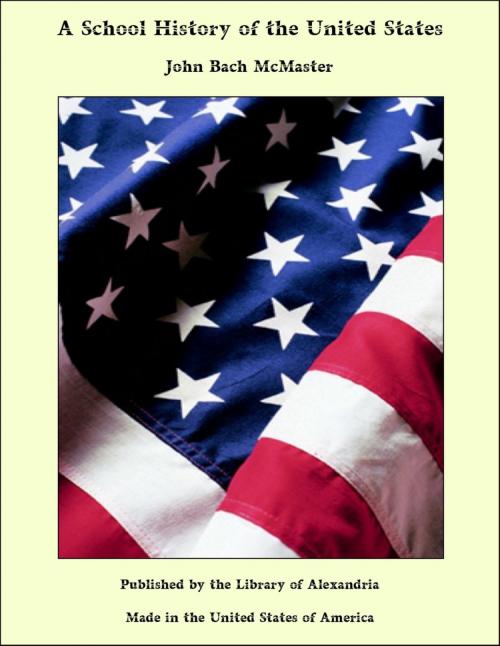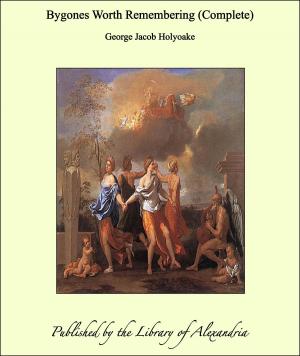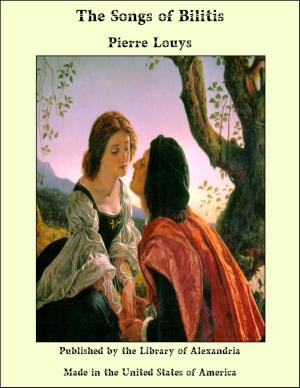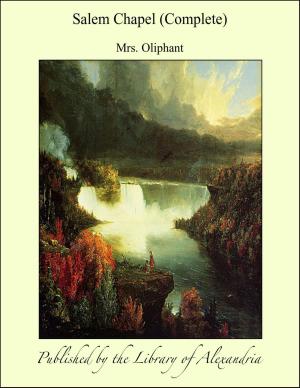A School History of the United States
Nonfiction, Religion & Spirituality, New Age, History, Fiction & Literature| Author: | John Bach McMaster | ISBN: | 9781465610027 |
| Publisher: | Library of Alexandria | Publication: | March 8, 2015 |
| Imprint: | Language: | English |
| Author: | John Bach McMaster |
| ISBN: | 9781465610027 |
| Publisher: | Library of Alexandria |
| Publication: | March 8, 2015 |
| Imprint: | |
| Language: | English |
Nations that have owned our Soil.—Before the United States became a nation, six European powers owned, or claimed to own, various portions of the territory now contained within its boundary. England claimed the Atlantic coast from Maine to Florida. Spain once held Florida, Texas, California, and all the territory south and west of Colorado. France in days gone by ruled the Mississippi valley. Holland once owned New Jersey, Delaware, and the valley of the Hudson in New York, and claimed as far eastward as the Connecticut river. The Swedes had settlements on the Delaware. Alaska was a Russian possession. European Trade with the East; the Old Routes.—For two hundred years before North and South America were known to exist, a splendid trade had been going on between Europe and the East Indies. Ships loaded with metals, woods, and pitch went from European seaports to Alexandria and Constantinople, and brought back silks and cashmeres, muslins, dyewoods, spices, perfumes, ivory, precious stones, and pearls. This trade in course of time had come to be controlled by the two Italian cities of Venice and Genoa. The merchants of Genoa sent their ships to Constantinople and the ports of the Black Sea, where they took on board the rich fabrics and spices which by boats and by caravans had come up the valley of the Euphrates and the Tigris from the Persian Gulf. The men of Venice, on the other hand, sent their vessels to Alexandria, and carried on their trade with the East through the Red Sea. New Routes wanted.—Splendid as this trade was, however, it was doomed to destruction. Slowly, but surely, the Turks thrust themselves across the caravan routes, cutting off one by one the great feeders of the Oriental trade, till, with the capture of Constantinople in 1453, they destroyed the commercial career of Genoa. As their power was spreading rapidly over Syria and toward Egypt, the prosperity of Venice, in turn, was threatened. The day seemed near when all trade between the Indies and Europe would be ended, and men began to ask if it were not possible to find an ocean route to Asia. Now, it happened that just at this time the Portuguese were hard at work on the discovery of such a route, and were slowly pushing their way down the western coast of Africa. But as league after league of that coast was discovered, it was thought that the route to India by way of Africa was too long for the purposes of commerce. Then came the question, Is there not a shorter route? and this Columbus tried to answer.
Nations that have owned our Soil.—Before the United States became a nation, six European powers owned, or claimed to own, various portions of the territory now contained within its boundary. England claimed the Atlantic coast from Maine to Florida. Spain once held Florida, Texas, California, and all the territory south and west of Colorado. France in days gone by ruled the Mississippi valley. Holland once owned New Jersey, Delaware, and the valley of the Hudson in New York, and claimed as far eastward as the Connecticut river. The Swedes had settlements on the Delaware. Alaska was a Russian possession. European Trade with the East; the Old Routes.—For two hundred years before North and South America were known to exist, a splendid trade had been going on between Europe and the East Indies. Ships loaded with metals, woods, and pitch went from European seaports to Alexandria and Constantinople, and brought back silks and cashmeres, muslins, dyewoods, spices, perfumes, ivory, precious stones, and pearls. This trade in course of time had come to be controlled by the two Italian cities of Venice and Genoa. The merchants of Genoa sent their ships to Constantinople and the ports of the Black Sea, where they took on board the rich fabrics and spices which by boats and by caravans had come up the valley of the Euphrates and the Tigris from the Persian Gulf. The men of Venice, on the other hand, sent their vessels to Alexandria, and carried on their trade with the East through the Red Sea. New Routes wanted.—Splendid as this trade was, however, it was doomed to destruction. Slowly, but surely, the Turks thrust themselves across the caravan routes, cutting off one by one the great feeders of the Oriental trade, till, with the capture of Constantinople in 1453, they destroyed the commercial career of Genoa. As their power was spreading rapidly over Syria and toward Egypt, the prosperity of Venice, in turn, was threatened. The day seemed near when all trade between the Indies and Europe would be ended, and men began to ask if it were not possible to find an ocean route to Asia. Now, it happened that just at this time the Portuguese were hard at work on the discovery of such a route, and were slowly pushing their way down the western coast of Africa. But as league after league of that coast was discovered, it was thought that the route to India by way of Africa was too long for the purposes of commerce. Then came the question, Is there not a shorter route? and this Columbus tried to answer.















